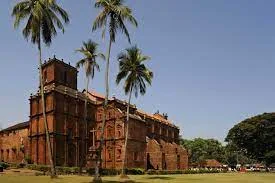Early Goan
Intellectuals’European heritage
(From Goan Intellectuals and Goan identity by the late Pramod
Kale)
THE EARLY Goan intellectuals were predictably and inevitably
influenced by the European models of the day. They were divided in their polemics
as Royalists and Republicans, conservative Catholic dogmatists and secular
anticlerical reformers and humanists. Europe shaped their thoughts and European
concerns were their concerns. Most of them were educated in Europe and spent
much of their time imbuing their minds with new ideas that represented the
spirit of the age.
They mastered many European languages. They wrote in
Portuguese mainly, but also in French, English and Italian. They were civil
servants and administrators who served the Portuguese in Goa and other
colonies. They were doctors and lawyers. They were scions of the landed gentry
(Bhatkars) in Goa. They lived in their palatial houses in Goan villages. They
collected honours and titles from the Vatican and various European courts and
republics, they got their biographical sketches and titles entered into
publications meant for that purpose.
They subscribed to European magazines and journals. They
wrote novels and plays in Portuguese and acted them out in Margao and Panjim. Their
social life generated a unique syncretic culture marked by performances such as
the Mando or the Dekani. The colonial rulers granted Eurocentric metropolitan
intellectuals the status of “asimilados’ who were role models for the upper-class
Goans.
From the Eurocentric intellectuals arose a class of
intellectuals in Salcette and Margao, who began to concern themselves with ideological
issues and participatory, elective politics at the local provincial and
colonial levels.
Class, caste and work:
The traditional Goan intellectuals come mostly from the elite
class and the two upper castes bamon (brahmin) and charado (kshatriya). The
upper castes distinguish themselves from the sudirs (sudras), a blanket term
used to describe converts from all other castes which include a number of occupational groups of varying
social status. Although no census figures are available from pre and post-independence
, it is evident that the sudir group worked as tenant farmers (mundkars). They
also worked as menials and servants in landlords’ houses and places of business
and as small independent tradesmen: carpenters, tailors, barbers, cobblers.
They received a rudimentary education in the three Rs (reading, riting and
rithmetic) and in music at the parochial schools run by the clergy in the
village. For them, the clergy and the teachings of the Church were much more
importance than for the upper castes.
The early Goan emigrants to Bombay, for instance, worked as
cooks, butlers, and domestic servants for the British. With their familiarity
with Western music and instruments they found employments as players and
bandmasters. A large number worked as ship hands, sailors, cooks, stewards on
passenger and cargo liners. These shippies (tarwatis) earned good wages, saved
substantial sums with which they were able to buy land and build houses. A
sizable part of this money was also spent on ostentatious living, prompted by a
desire to compete with the landlords of the bamon and charado communities. (This tradition was to continue in the
Gulf, Eastern Africa and where Goans congregated in reasonable numbers).
The sudir community shows some characteristics of the
subaltern group. The intellectuals amongst this group seem to have a different
world view and a different sense of identity than the elite intellectuals have.
Their literature, their theatre as well as their politics appear to be a convergence
of three elements. At the very bottom is the traditional (Indian) belief in a
strict hierarchical ordering within the family and the society which is based
on prescriptive rather than ascriptive norms of relationships between its
members. The second is provided provided by religion, a belief in the sanctity
of the Church, clergy, of suffering and martyrdom, of humility and poverty, in
divine intervention and miracles wrought through prayers, rituals and penance.
The third is acceptance of the Western way of life, nostalgia
for the symbols of European colonial rule. This worldview is reflected in popular
Konkani tiatrs and in Romanses (romantic
novels) in Konkani. It is also expressed
in the 19th century and contemporary Goan journalism in Konkani,
English and Portuguese and published from Goa and outside Goa. The migrant subaltern
Goan from Bombay, Karachi, Nairobi, Lisbon, London, New York, or Toronto has
contributed as much to the shaping of a common ideology and dream of a Goa as
the Goans living in Goa.
(This article is an excerpt from Pramod Kale’s own work. I
reproduce here purely for history’s sake. I hope I can find a similar analysis
of Goa since independence and especially in the past five decades with fewer
Catholics living in Goa and the expanding diaspora.)

Comments